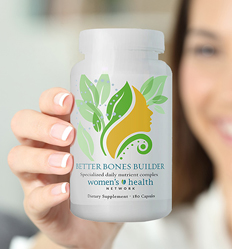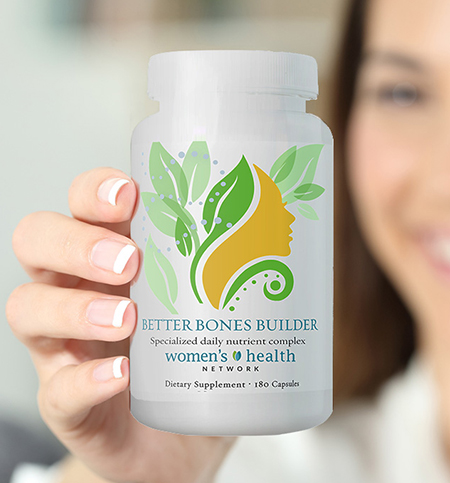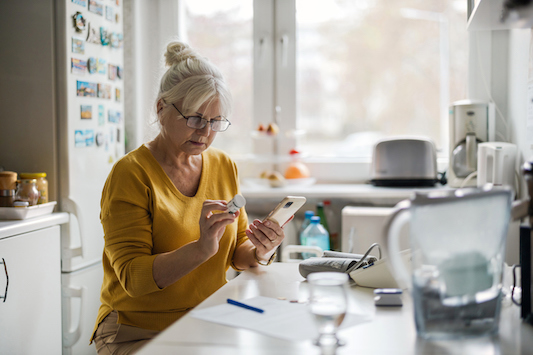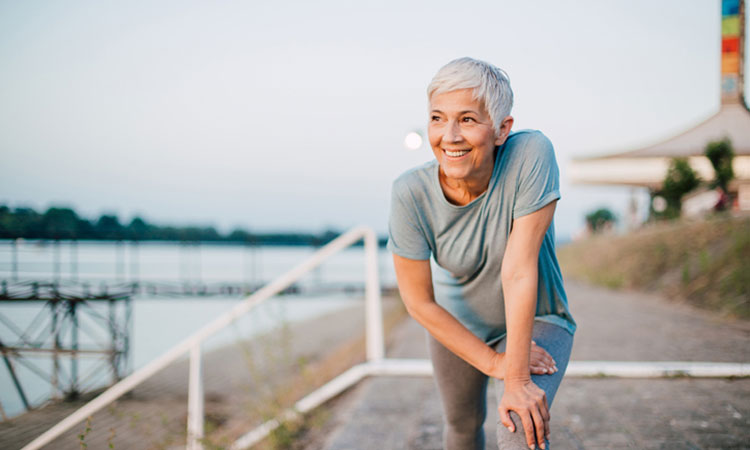By Dr. Susan E. Brown, PhD
When your doctor tells you that you have osteopenia, it can be scary. But a major reason why that’s true is that conventional medicine tends to leave unanswered the basic questions women have — questions like, what is osteopenia? What causes osteopenia? And above all, what is the best treatment for osteopenia?
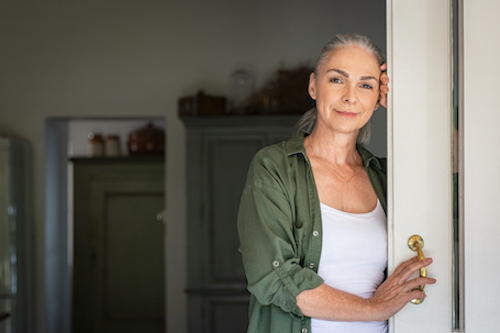
We’ll explain everything you need to know. But first, you need to understand that the situation you’re in is more complex — and much less frightening — than your doctor has probably explained.
Table Of Contents:
- So, what is osteopenia?
- Osteopenia vs osteoporosis
- 4 questions to ask yourself when you have osteopenia
- You’ve been told that you have osteopenia. Where do you start?
- What do your bones need to stay strong?
- You are invited to empower yourself!
So, what is osteopenia?
First, a definition. In the world of women’s bone health, the word osteopenia simply means “less bone” — it’s a scientific term that means that a person’s bones are thinner or less dense than might be expected.
Osteopenia is not, and was never meant to be, a true diagnosis, nor is it a disease. Osteopenia is simply a way to describe a state of relatively low bone mass. “Osteopenia” as we know it is a term that osteoporosis researchers redefined in 1992 to classify a person whose bone density was somewhat lower than the “normal” bone density.
And what’s meant by normal?
Because bones reach their maximum density and growth, on average, when we’re in our early 20s, conventional medicine holds that as we age, the best way to tell if bones are staying strong is to see if they’ve maintained all or most of the density that they had when you were a 21-year-old woman. So the standard practice is to take the bone density of the “average” 21-year-old and use that as a standard for comparing the status of your bone density.
Now, it’s expected that you’ll lose some bone density as you get older — but lose too much, the conventional thinking goes, and you’re at risk for osteoporosis. Thus, if your bone density strays too far from the standard, you’ll be told you have osteopenia — which puts you, according to this thinking, at higher risk of osteoporosis and fractures, and thus requires some sort of active treatment. The treatment option usually involves a drug that’s intended to increase your bone density as a way of preventing fractures.
Sounds simple, right? But unfortunately, none of this is quite true. First, let’s keep in mind that comparing anyone to an “average” 21-year-old woman is problematic for a lot of reasons — the key one being that people come in all sizes. This means women who are smaller in stature or who are very slender may have “thinner-than-normal” bones (osteopenia) when compared to that average, but that doesn’t mean anything because her bone mass is normal for her.
And second, there are a lot of reasons why it’s not likely that you’ll have the same bone density you had at 21 — but that fact doesn’t mean your bones are growing weaker. Science is actually quite clear that osteopenia alone is not a predictor of osteoporosis, nor can it predict whether you’ll have a bone fracture. Osteopenia has no symptoms, and many women may have osteopenia for most or all of their lives and never even realize it!
And that “osteopenia medication” your doctor may be recommending? You need to know there’s a lot of controversy surrounding using bone drugs at all, and especially when the “diagnosis” is osteopenia:
- Prescription medications are not what the Surgeon General recommends as a first step in treating bone thinning and fragility.
- Every bone drug on the market has side effects, some of them fairly serious, especially in long-term use — and long-term use is what women with osteopenia are facing.
- There’s growing, thoughtful medical consensus that bone drugs are largely ineffective and unnecessary for preventing fractures in those with osteopenia (Alonso-Coello et al., 2008).
Osteopenia vs osteoporosis
There is a lot of confusion between these two terms. Osteopenia and osteoporosis are NOT the same thing. The difference in a nutshell? Osteoporosis suggests a disease process; osteopenia is a description of lowered bone density.
When you have a diagnosis of osteoporosis, it means you have an actual disorder that can be seen under a microscope. The word “osteoporosis” means “porous bone,” and a close look at the bones of someone with osteoporosis shows the bones are more like Swiss cheese than the spongy appearance of healthy bone.
Osteoporosis is not a normal response to aging, but is indicative of long-term imbalances which culminate in a bone weakening disease process.
Osteopenia, on the other hand, is not a diagnosis. As noted above, it’s simply a description. This is a key difference between osteopenia and osteoporosis and helps to understand what to do next. Osteoporosis warrants an extensive work-up looking for causes of excessive bone loss. Osteopenia may or may not be an early warning sign of bone weakening and generally does not trigger the need for a work-up or conventional medical treatment, with some exceptions.
4 questions to ask yourself when you have osteopenia
I firmly reject the “great osteopenia scare” that pushes women into looking at osteopenia as a “disease” to be treated with controversial bone drugs, without much further thought or discussion. Women need better, more complete and more accurate information about their bone health.
To contemplate what osteopenia might mean — or not mean — for your health, ask yourself the following questions. Your answers can help you begin to distinguish a harmless finding of osteopenia from an actual red flag that warrants further investigation.
Are you entering or in menopause?
The average woman loses 10% of her bone mass between the first few years before and the first five years after her last period. Some women lose up to 20% in the menopause transition. Starting this transition with lower-than-normal bone mass (osteopenia) is a signal that you need to prioritize maintaining and rebuilding your bones during and after menopause to reduce your risk of fracture.
Do you have a family history of hip fracture?
When osteopenia is found in someone whose parent(s) have experienced a hip fracture, this may be an early warning sign of future bone fragility. If hip fracture is part of your family history, further testing can help you find out if you are losing bone — and how rapidly.
Have you ever experienced a low-trauma fracture?
If you have osteopenia and have already experienced a low-trauma fracture, this is documented bone weakness and a sign that you need to place more attention on implementing a bone-building lifestyle and nutrition program as I discuss further on in this article.
Do your bone scans reveal rapid and excessive bone loss?
Because bone loss is common in women in perimenopause and menopause, finding “osteopenia” in a single bone scan may mean very little; the real concern is if subsequent scans reveal rapid and excessive bone loss beyond what’s usual during menopause. If you’re losing more than, say, 2% per year during and immediately after menopause (or more than 1% per year if you’re more than five years post menopause), then you may be on your way to osteoporosis. (But we know lots of ways to decrease bone loss in menopause.)
You’ve been told that you have osteopenia. Where do you start?
The Surgeon General’s recommended options for bone health
Science shows conclusively that a program of exercise, dietary changes and nutritional supplements, and lifestyle changes to reduce key bone-damaging factors is at least as effective as bone-building drugs — without the side effects. Most doctors don’t offer an osteopenia diet and exercise program as a first option for osteopenia because they think their patients won’t follow it. That may be true for some people, but you need to know that’s exactly what the Surgeon General has recommended.
That’s right — the Surgeon General of the United States said start with a natural approach focused on improved nutrition and exercise. And the only side effect of that approach is overall better health, longevity, vitality… you get the picture.
So, let’s get you the information you need to make good choices for yourself and your long-term bone health.
What do your bones need to stay strong?
First, let’s jettison one idea right away. Thin bones aren’t necessarily weak ones. (Nor are dense bones necessarily strong!)
Low bone density is one risk factor for osteoporotic fracture; however, having osteopenia doesn’t mean you will have a fracture. In fact, studies suggest that the majority of all people who experience bone fractures don’t have osteoporosis or even osteopenia.
Bone density alone does not determine fracture risk. There is much more involved in the equation and the real concern isn’t how thick or thin your bones are, it’s how strong they are. That’s what determines your risk for fractures, and fractures are what everyone’s concerned about.
So now the question becomes, what do you need to do to keep your bones strong?
- Nutrition – An alkaline diet can nourish your bones by delivering key bone-building nutrients and balancing your pH to protect your bones. Taking a daily nutritional supplement for bone to fill any dietary gaps is also important.
- Exercise – Load bearing exercise is critical to strengthening muscle and activating bone building. Exercise is also essential for decreasing stress and helping to improve circulation and overall health.
What if diet and exercise are not enough?
It’s going to take time for changing your diet and exercise habits to help with osteopenia. If you’re not seeing any improvement, it’s worth looking into factors that might be preventing you from getting the benefit of these changes. For instance, if you suffer from gastrointestinal disorders, it could be a sign that you’re not able to absorb nutrients well; this might be a place where taking steps to solve that problem might be in order, such as taking a high quality probiotic.
Perhaps there are foods you don’t respond well to. Eliminating them from your diet may improve your digestive health — or you might consider taking probiotics to support your gut bacteria. There may also be an underlying health issue that’s leading you to lose excess bone (thyroid disorders, for instance, are quite common in middle-age and older women). If you have nutritional gaps or special nutritional needs, supplementation with a natural bone-building supplement can deliver the nourishment your bones need for rebuilding and strengthening.
It’s also important to understand that there may be situations where the use of a bone drug is warranted for women with osteopenia — but ideally, it’s a temporary thing, not a long-term solution. If you and your doctor decide that this is the way to go, the steps described above are still important as supportive care for your bones and overall health. Remember, a bone drug is not the first step to improving bone health — it’s the last.
You are invited to empower yourself!
If you’ve been told you have osteopenia, I encourage you to complete our free fracture risk assessment quiz for more answers about your bone health and customized recommendations for your next steps. Gain a deeper understanding of how to make truly informed decisions about your bone health. The power is in your hands.







